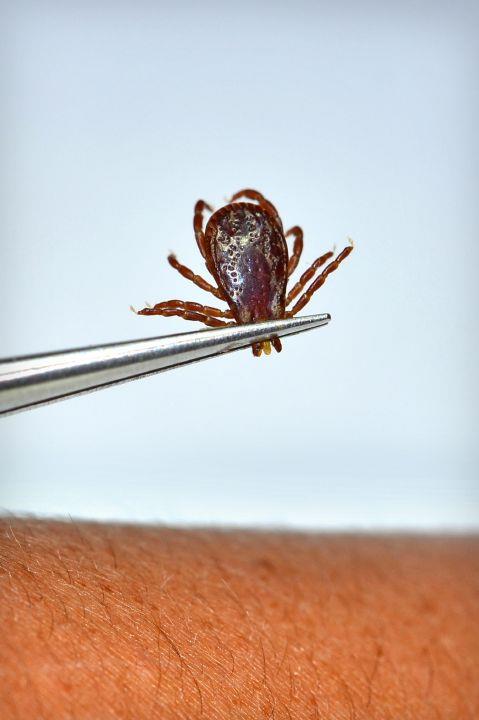 |
| File Photo |
I first noticed a raspberry-red rash emanating from my neck down to my chest. It was not in the classic bullseye form of a Lyme disease tick bite, but that’s exactly what I ended up having. I never saw the critter and could barely detect a small mark where it bit me. After a few days with an ever-spreading rash, I started to feel crummy–headache, fatigue, joint pain–classic symptoms of Lyme–and pretty soon, it got worse. After about a week, I was the sickest I’ve ever been in my life. My knees hurt to the point that it was hard to walk, and my lymph nodes swelled. I was dizzy, short of breath, and developed a dry hack which, given the advanced state of my headache, generated new levels of pain every time I coughed.
Lying in bed, my fever spiked to 102.3. My head hurt so bad I was immobilized, I couldn’t focus; I thought I was going to die. The doctor suspected Lyme, named for the town in Connecticut where it was first diagnosed in 1975, and put me on the antibiotic Doxycycline and the steroid Prednisone for the rash. They tested me for COVID twice, which was not my ailment.
I had nothing to do but suffer, occasionally talking to friends to update them on my misery. At one point, I couldn’t type or text because my hands were shaking so bad from the chills. Trying to sleep, I alternated from freezing with three blankers over me to sweating so much that my clothes were soaked. I couldn’t eat, nor could I sleep through the night. My biological clock went haywire. It is at this point that you consider what your life would be if such hideous symptoms dragged on. You start to have mortal thoughts. If I did drift off, my fevered dreams were bizarre, to say the least.
When I could bring myself to focus, I learned that the infection comes from Borrelia bacteria, spread by deer ticks in the genus Ixodes. The eight-legged little bastards are not insects, but arachnids from the spider family. The bacterium was first described in 1981 by Willy Burgdorfer, noting an incubation period from infection to the onset of symptoms of usually one to two weeks, but can be much shorter (days) or much longer (months to years). Some reports say that the tick must be attached 36-48 hours to spread the infection, but I didn’t see a tick on me at all, and I doubt one was attached that long without me noticing.
I read about singer/songwriter Kris Kristofferson being leveled by the disease. He had massive, painful spasms all over his back and legs, his nerve endings were causing golf ball-sized, painful contractions. He was not diagnosed right away and did not receive treatment at first. During an eight-month period, he was in so much pain he could barely function.
Thankfully, there were some symptoms that I dodged: facial palsy, arthritis, heart palpitations, irregular heartbeat, inflammation of the brain and spinal cord, numbness, nerve pain. Unlike Kristofferson, I was diagnosed early, and after a few days of treatment, the symptoms began to subside. For every hour, every day, that I felt better, I was elated just to be alive and well. I now appreciate the little things in life and more easily let go of my bigger worries.
It took a few days for my blood test results to come in and I received another surprise: In addition to Lyme disease, I also had Babesiosis, another illness caused by ticks. In this case, it was the Ixodes scapularis that gifted me a parasite that many times doesn’t cause symptoms. According to the doctor, I could have been infected anytime in the past and I’ve certainly had my run-ins with ticks. One time after visiting Shadmore State Park in Montauk, I had dozens of bites all over my lower extremities, some in really personal places, that I had thought were chiggers. These were the itchiest little red bumps that you could imagine that lasted almost a month. I’ve read reports that these were either from chiggers or tick nymphs; they’re so small that I never even saw them. In either case, I had similar bites appear around the same time as my Lyme rash, so I’m not sure when the scapularis may have gotten me.
While in my feverish state, a friend planted a disturbing thought in my head: The now-defunct infectious disease laboratory at Plum Island, just off Long Island’s northeastern tip, harbored all kinds of nasty bugs. Could this have been the original source of my tick diseases? You never know.
